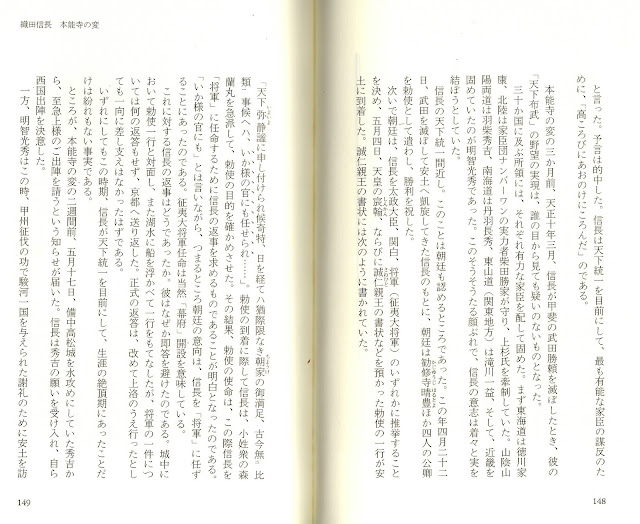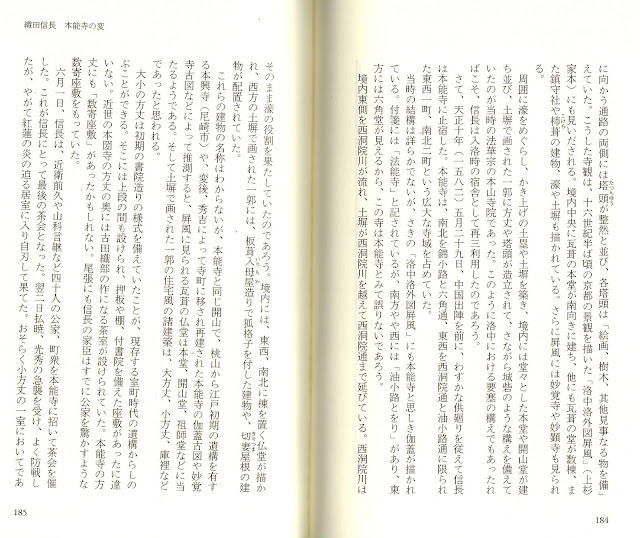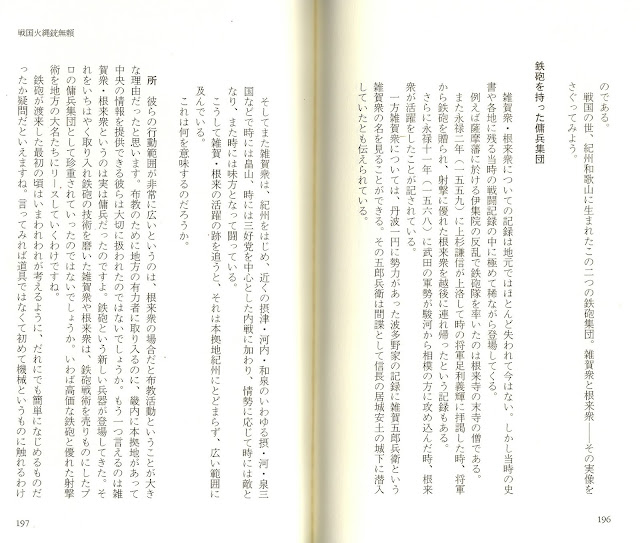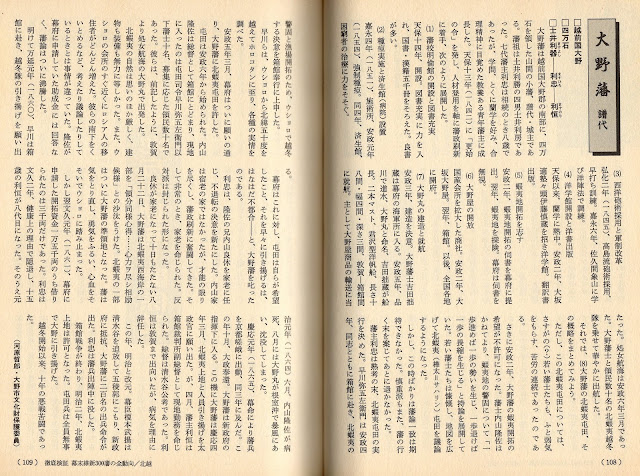安土城古城図、反転してて、実は黒金門からの出城で、とか、以前色々いいましたが、なんだっけ(笑)?とりあえず、実地と符合しませんか?
Saturday, 12 October 2013
represents
For example、倭.
When I look at pronunciation of this Chinese character in the Chinese characters dictionary.(Of course、for Japanese.)
①イ(i)②カ(ka),クヮ(KUwa' 👈this feeling)③ワ(wa)
It is described so.Pronunciation of a Chinese character.I do not say categorically、but it is so diverse in Japan.
By the way、all of these were the pronunciation of China originally. "Yamato."This pronunciation of the Japanese style is not described in this Chinese characters dictionary. Today、general pronunciation of 倭 in Japan is "wa"."Yamato" is rarely used as pronunciation indicating the 倭.If anything、this is in the category of phonetic equivalent at present. ・・・・・・・・・
② is "漢".③ is "呉". Well、Chinese characters of these、it is appended to this description. "The time that the pronunciation of this Chinese characters have been introduced to Japan."This shows it. In short、漢 is the pronunciation of 漢.呉 is the pronunciation of 呉. ・・・・・・・・・
"漢(the Han dynasty)" is a long-term unified dynasty of China first.(208BC‐8AD、25AD‐220AD) After the fall of its 漢、until unification of 隋(the Sui dynasty) of 589AD.About 370 years、China was the era of division. And its initial、it was the era of the Three Kingdoms. (220AD-280AD)"呉(the Wu dynasty)" was its southern dynasty. (222AD-280AD) However、in this case,its meaning is different.
This 漢 does not represent the Han dynasty.In this case、it represents the China of after Sui Dynasty unified.
And 呉.It does not represent the Wu dynasty only.It represents the southern dynasty of era of division. In short、time of 呉 is earlier than 漢.
Note:漢 represent the China.This feeling is strong in Japan even now.
・・・・・・・・・
Kings of Japan.According to the history book of China at the time、they seems to often sent envoys to this southern dynasty.
"Five Japanese(倭) king envoys came to our dynasty."Such record remains. However、record of Japanese side is not clear about it.
An envoy of the last king of the five kings.According to this record、it was 478AD.
It seems that around that time the record becomes clear in Japan.
For example、倭.
When I look at pronunciation of this Chinese character in the Chinese characters dictionary.
(Of course、for Japanese.)
①イ(i)
②カ(ka),クヮ(KUwa' 👈this feeling)
③ワ(wa)
It is described so.
Pronunciation of a Chinese character.
I do not say categorically、but it is so diverse in Japan.
By the way、all of these were the pronunciation of China originally.
"Yamato."
This pronunciation of the Japanese style is not described in this Chinese characters dictionary.
Today、general pronunciation of 倭 in Japan is "wa".
"Yamato" is rarely used as pronunciation indicating the 倭.
If anything、this is in the category of phonetic equivalent at present.
・・・・・・・・・
② is "漢".
③ is "呉".
Well、Chinese characters of these、it is appended to this description.
"The time that the pronunciation of this Chinese characters have been introduced to Japan."
This shows it.
In short、漢 is the pronunciation of 漢.
呉 is the pronunciation of 呉.
・・・・・・・・・
"漢(the Han dynasty)" is a long-term unified dynasty of China first.
(208BC‐8AD、25AD‐220AD)
After the fall of its 漢、until unification of 隋(the Sui dynasty) of 589AD.
About 370 years、China was the era of division.
And its initial、it was the era of the Three Kingdoms. (220AD-280AD)
"呉(the Wu dynasty)" was its southern dynasty. (222AD-280AD)
However、in this case,its meaning is different.
This 漢 does not represent the Han dynasty.
In this case、it represents the China of after Sui Dynasty unified.
And 呉.
It does not represent the Wu dynasty only.
It represents the southern dynasty of era of division.
In short、time of 呉 is earlier than 漢.
Note:漢 represent the China.
This feeling is strong in Japan even now.
・・・・・・・・・
Kings of Japan.
According to the history book of China at the time、they seems to often sent envoys to this southern dynasty.
"Five Japanese(倭) king envoys came to our dynasty."
Such record remains.
However、record of Japanese side is not clear about it.
An envoy of the last king of the five kings.
According to this record、it was 478AD.
It seems that around that time the record becomes clear in Japan.
Sunday, 13 October 2013
brought
Exchanges with southern dynasties of China.Chinese characters was introduced to Japan in earnest by this. And pronunciation of these Chinese characters、it called "呉音(go-on)" in Japan. (音 is "sound".) Note:Japanese "o" does not extend the sound of the ending.If we want extend the sound of the ending、it represent as "ō". For example、"go" of English.This represent as "gō(ゴー)". Incidentally、there is katakana and hiragana as characters unique to Japan. katakana(アイウエオ) is ◇ as impression.hiragana(あいうえお)is 〇 as impression.
If we write pronunciation of English in Japanese、it will be a notation by katakana usually.Perhaps、because impression of the appearance of both is close.(In reliance on the sense of Japanese.) kata-kana.hira-gana. Formal pronunciation is "kana". "gana""an apple"
Maybe the same feeling.
※I'm not sure、but I think that the frequency of use of katakana is high from the Meiji period to the defeat in 1945.In the case of writing in hiragana now、they use Katakana for it at that time.The character of supplement when reading Chinese text in Japanese style was usually katakana.The relationship with this may be strong.※
・・・・・・・・・
Well、”pronunciation of these Chinese characters.It called 呉音 in Japan." It can not actually say so flatly. The last envoy of Japan on the record of China side、it's late 5th century.
And mid-6th century、Buddhism was brought to Japan from Baekje of the Korean Peninsula.Exchanges with southern dynasties of China and Baekje.At that time、it also seems to had been very active.
Emperor of southern dynasty at the time.He(※They?) had a godly to Buddhism.(Although many dynasties had born and vanished in a short period of time.)
Buddhism was brought to Baekje from there.And it was brought to Japan.This possibility seems high. Note:But this details、it is not clear at present.Because there is little literature about it. After all、we do not know for sure about it.
※Buddhism introduction to China is the age of the Three Kingdoms.At least Buddhist foreigners would have come to Japan、I think、it is unnatural that Japanese did not know Buddhism until then.※
・・・・・・・・・
However、mid-6th century、Buddhism was transmitted to Japan from Baekje of the Korean Peninsula.This is certain.
Many Buddha scriptures that were translated to Chinese.Of course、they would have been brought to Japan. And of course、there is a need to read it to understand the Buddhism.Japanese began to read the Buddha scriptures by pronunciation of the south China.
It seems the beginning of the introduction of "呉音" into Japanese.
Note:"Face of Buddha is sparkling !"
According to the record of Japan at the time.Japanese seems to surprised by the beauty of Buddha statue at first rather than the teachings of the Buddha scripture.
Exchanges with southern dynasties of China.
Chinese characters was introduced to Japan in earnest by this.
And pronunciation of these Chinese characters、it called "呉音(go-on)" in Japan.
(音 is "sound".)
Note:Japanese "o" does not extend the sound of the ending.
If we want extend the sound of the ending、it represent as "ō".
For example、"go" of English.
This represent as "gō(ゴー)".
Incidentally、there is katakana and hiragana as characters unique to Japan.
katakana(アイウエオ) is ◇ as impression.
hiragana(あいうえお)is 〇 as impression.
If we write pronunciation of English in Japanese、it will be a notation by katakana usually.
Perhaps、because impression of the appearance of both is close.
(In reliance on the sense of Japanese.)
kata-kana.
hira-gana.
Formal pronunciation is "kana".
"gana"
"an apple"
Maybe the same feeling.
※I'm not sure、but I think that the frequency of use of katakana is high from the Meiji period to the defeat in 1945.
In the case of writing in hiragana now、they use Katakana for it at that time.
The character of supplement when reading Chinese text in Japanese style was usually katakana.
The relationship with this may be strong.※
・・・・・・・・・
Well、”pronunciation of these Chinese characters.
It called 呉音 in Japan."
It can not actually say so flatly.
The last envoy of Japan on the record of China side、it's late 5th century.
And mid-6th century、Buddhism was brought to Japan from Baekje of the Korean Peninsula.
Exchanges with southern dynasties of China and Baekje.
At that time、it also seems to had been very active.
Emperor of southern dynasty at the time.
He(※They?) had a godly to Buddhism.
(Although many dynasties had born and vanished in a short period of time.)
Buddhism was brought to Baekje from there.
And it was brought to Japan.
This possibility seems high.
Note:But this details、it is not clear at present.
Because there is little literature about it.
After all、we do not know for sure about it.
※Buddhism introduction to China is the age of the Three Kingdoms.
At least Buddhist foreigners would have come to Japan、I think、it is unnatural that Japanese did not know Buddhism until then.※
・・・・・・・・・
However、mid-6th century、Buddhism was transmitted to Japan from Baekje of the Korean Peninsula.
This is certain.
Many Buddha scriptures that were translated to Chinese.
Of course、they would have been brought to Japan.
And of course、there is a need to read it to understand the Buddhism.
Japanese began to read the Buddha scriptures by pronunciation of the south China.
It seems the beginning of the introduction of "呉音" into Japanese.
Note:"Face of Buddha is sparkling !"
According to the record of Japan at the time.
Japanese seems to surprised by the beauty of Buddha statue at first rather than the teachings of the Buddha scripture.
we are amaterasu kingdom dimensions
"言葉"を救出しないと。
たしか信長さんには梅雨将軍という異名があったとおもいますが(新田次郎さんの創作かもしれませんが・笑)、泥田に馬の足を取られたのは木曽義仲さんでしたか?
この場合の"オケがいい感じにできる"とは、おれらのことを全く知らない、当然おれらの曲なんか聴いたこともない、聴く義務もない、という人らに、とりあえず一曲通して聴いてもらえるだろう、と、判断できる仕上がりのこと。と、なると、全般的に打ち込み頼りで"驚け"に偏りがちになりますが、そこは時と場合によりけりに余計なお世話で。ま、それもどうだろう、で、コックリさん奏法に向かったトコもありますが(布袋さんへのあこがれが一番の理由)。
差異と反復(平和成ルではなく平和成スだな)。
手塚さんの三つ目がとおるで、"幽霊船"実は船底潜航艇、というのがありましたが、松本さん宇宙戦艦ヤマトの第三艦橋はそういうことでしょうか(笑)?
まんが道は読むべきと個人的に思います (ドラえもんは歩く原子炉なんですね・笑)。
what is a human.
gerrymander : 1 【政】ゲリマンダー《自党を有利にするための、区の広さや人口を無視した不自然な選挙区の区割り》 2 《自派のための》身勝手な手加減、ごまかし.〈選挙区を〉自党に有利に区割りする、ゲリマンダーをやる ; 身勝手に手加減する、ごまかす.(リーダーズ英和辞典第2版より引用)
明示対象商倭、成平和◯
おれの妻には確認済み。令和元年七月四日以後の"ハロプロ"全員ゴミ処刑。皆殺。
俺と妻はバカが嫌い。令和元年七月十二日以後のお笑い芸人全員ゴミ処刑。皆殺。お笑いごときついでで十分。で、今後、職業ジャンルとしての政治家が必要なのか、俺は疑問を持ちますね。ま、疑問があるなら自分で解決したほうがいいんでしょうが。 - はいはい(笑)。あのですね、今もそうなんだろうけど、今後はもっとシンプル明瞭に、ン十億人単位の実質直接民主制になるだろうなと。それを可能にする条件が整う。俺は造物主だが独裁者ではない。したがってこの世界に"独裁者"は存在できない。俺がありつづけることが民主主義の永遠を担保する。これはもうすぐ終わるけどね(笑)。
このブログを通して一つ明白なことは、俺は真剣に"死ね(処刑)"と言い、彼女たちはその俺を真剣にサポートしているということ。
でびるちゃんずみーとざみらくるつあー2019。
『オーガロイド』の格闘とはドッグファイトという認識でしょうか?
if you can't stand the heat、get out of the kitchen.
per aspera ad astra.
八紘一宇。
最後にもう一度確認しよう、我々はあしたのジョーである。
小説執筆は加藤浩志さんF91の劇中歌は三原順子さんお二人は仲が良いご夫婦。F91原作総監督は安彦良和さん。
あのですね、フォン・ブラウンさんは。
亡くなられていないということだ、と、そう判断しました。
皇国ノ興廃此ノ一戦ニ在リ、各員一層奮励努力セヨ
to put it simply.
gйnie or je suis saint esprit;je suis sain d'esprit あるいは、おれはゴッホさんが亡くなった部屋を、それを本や映像でいつか見た、という意味ではなく、知っていた、そこはショパンさんの部屋でもある。
天照帝。この、ナイト オブ ゴールド "イリアス"のバスターランチャーで、現在、地球直撃コースで飛来する直径500キロの小天体を狙撃消滅するのがおれとさゆみの最初のお仕事。(V)o¥o(V)。
ふと思いましたが、わ、に、倭、という漢字をあてたのは、天照大御神なおれに対するひとの敬意ではないですかね(笑)。
松浦鉄道をキチガイ鉄道として観光化するなら周辺住民への説明、迷惑料の支払は佐世保市行政の義務だと思いますが、無能には求めませんが、駆け込み引っ越し増えるのもウザいので、ついでに、隔靴掻痒は俺じゃなくてもウザいと思うと思うぞ、簡単な話だ、運転手など、やってる奴ら、100人なら100人、一億人なら一億人、やる奴がいなくなるまで殺さなきゃ終わらない、皆殺。
以前の繰り返しになりますが、世界中の軍隊は地球防衛軍、つまり自衛隊。愛国心とは他国の郷土愛を尊重すること。当然、無法には地球防衛軍として共同で対処。
lives
では。
and
and
and
"01 INTRODUCTION (1982.08.23 渋谷TAKE OFF 7)"
"04 ELITE (1982.05.30 千葉マザーズ)"
"06 NO NEW YORK (1982.10.09 新宿LOFT'BEAT120%')"
"09 RATS (1982.05.11 渋谷屋根裏)"
"11 GUERRILLA (1981.08.08 新宿LOFT)"
"12 ON MY BEAT (1981.08.08 新宿LOFT)"
"17 REY'S OUT!(1984.03.30 BEAT EMOTION LOFT 2DAYS~すべてはけじめをつけてから~)"
"18 たった一度のLOVE SONG"
"19 たった一度のLOVE SONG (1984.03.30 BEAT EMOTION LOFT 2DAYS~すべてはけじめをつけてから~)"
"20 LETS THINK"
"21 LET'S THINK (1982.10.09 新宿LOFT'BEAT120%')"
"22 NO PAIN (1981.04.11 新宿LOFT)"
"23 YOU GATTA YOU (1982.08.08 新宿LOFT)"
"24 SAD SUNSET(I DON'T WANNA FADE AWAY)"
"25 SAD SUNSET(I DON'T WANNA FADE AWAY) (1982.08.08 新宿LOFT)"
"19 たった一度のLOVE SONG (1984.03.30 BEAT EMOTION LOFT 2DAYS~すべてはけじめをつけてから~)"
"20 LETS THINK"
"24 SAD SUNSET(I DON'T WANNA FADE AWAY)"
"28 MARIONETTE (1982.10.09 新宿LOFT'BEAT120%')"
and
"06 TEENAGE EMOTION"
"07 LONDON GAME"
"09 THIS MOMENT (1982.10.09 新宿LOFT'BEAT120%')"
"10 DON'T KEEP HEART (1982.09.09 渋谷パルコ PARTⅢ)"
"12 OH!MY JULLY PartⅡ(1982.11.06 東京水産大学祭)"
"14 OH!MY JULLY PartⅠ(1984.08.09 "BEAT EMOTION TOUR" 高知県民文化グリーンホール)"
"15 FUCK OFF~LONDON GAME (1982.10.09 新宿LOFT'BEAT120%')"
"17 MY HONEY シンセサイザー Ver. (1983.11.03 "INSTANT LOVE TOUR" 渋谷LIVE INN)"
"18 SYMPHONIC シンセサイザー Ver. (1983.11.03 "INSTANT LOVE TOUR" 渋谷LIVE INN)"
"19 THIS MOMENT シンセサイザー Ver. (1983.11.03 "INSTANT LOVE TOUR" 渋谷LIVE INN)"
"25 BABY ACTION"
and
"18 WORKING SPUNKY"
"22 MIDNIGHT DATE (1984.12.06 "BEAT EMOTION TOUR" 仙台ヤマハホール)"
"24 TEDDY BOY MEMORIES (1984.08.09 BEAT EMOTION TOUR 高知県民文化ホール)"
"26 BEGINNING FROM ENDLESS (1985.06.25 “BIG GIG” 渋谷公会堂)"
and
"17 JUSTY (1986.05.04 "中京テレビ ROCK WAVE86'" 名古屋港ガーデン埠頭)"


































































































































































